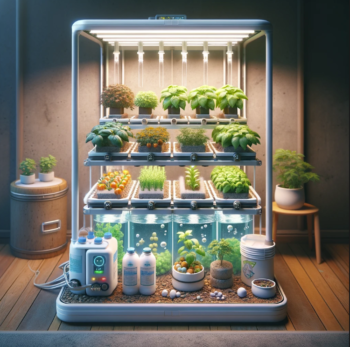Principles of Hydroponics
At its core, hydroponics revolves around nurturing plants in a water-based, nutrient-rich solution, bypassing the conventional use of soil. This approach fundamentally alters the relationship between plants and their growth environment, offering several advantages and considerations in plant cultivation.
How Hydroponics Operates
In hydroponic systems, plants are supported in various growth mediums, such as rock wool, clay pellets, or peat moss, which provide physical support. However, the primary focus lies on the nutrient solution, a meticulously balanced mixture of water and essential minerals. This solution is delivered directly to the plant roots, ensuring they receive the necessary nutrients for growth.
In traditional soil-based cultivation, plant roots must search through the soil for nutrients. Hydroponics simplifies this process, allowing for more efficient nutrient uptake. This enables plants to direct their energy towards upward growth and the production of leaves and fruits, rather than expanding their root systems downward. As a result, hydroponically grown plants often exhibit faster growth rates and frequently yield more.
Comparison with Soil-Based Cultivation
The direct delivery of nutrients in hydroponics provides precise control over the plant’s nutritional environment. This level of precision is challenging to achieve in soil, given the variability of soil types and the complexity of altering its nutrient composition.
Furthermore, hydroponic systems can be established nearly anywhere, including indoor spaces, rooftops, and urban environments where soil-based agriculture is impractical. This adaptability is a significant advantage, particularly in cities or regions with limited arable land.
Water usage is another differentiating factor. Hydroponic systems recirculate water, significantly reducing consumption compared to soil-based agriculture, where a significant portion of water is lost to the ground.
Understanding these principles is fundamental to appreciating the full potential of hydroponics. It represents not merely an alternative cultivation method but a complete rethinking of how we can grow plants efficiently and sustainably.



